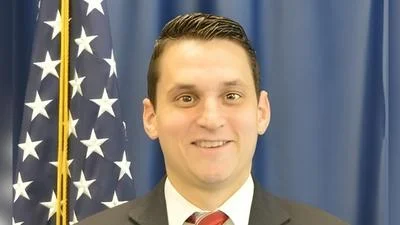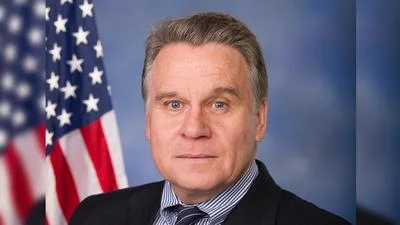The Congressional Record is a unique source of public documentation. It started in 1873, documenting nearly all the major and minor policies being discussed and debated.
“THE CTBT AND A NATIONAL NON-PROLIFERATION POLICY” mentioning the U.S. Dept. of Energy was published in the Senate section on pages S1457-S1458 on Feb. 15, 2001.
The publication is reproduced in full below:
THE CTBT AND A NATIONAL NON-PROLIFERATION POLICY
Mr. AKAKA. Mr. President, I rise today to discuss the Comprehensive Test Ban Treaty and how it fits into an integrated national non-
proliferation policy. We all agree that proliferation of nuclear weapons is a bad thing. Slowing or halting new countries from acquiring nuclear weapons, or keeping current nuclear states from developing new, more powerful weapons is not a Democrat or Republican--it is a necessity. It also is not a new idea.
Since the end of World War II, every president has worked on ways to reduce other countries' access to nuclear weapons and their reasons for trying to acquire them. By mutual security alliances and numerous international agreements, we have succeeded in slowing the development of nuclear weapons. But, the game has changed. A number of smaller states may see nuclear weapons, and other weapons of mass destruction, as the only way to counter the unparalleled superiority of American conventional military power. Therefore, the United States has more reason than ever to lead global efforts to stop proliferation.
A national non-proliferation program needs to include diplomatic, economic, scientific and military tools, all honed and accessible for particular proliferation problems. One such tool should be the Comprehensive Test Ban Treaty, CTBT. It is time for a responsible, calm reconsideration of the CTBT. Former Joint Chiefs of Staff chairman General Shalikashvili's recent report addresses many of the questions and concerns raised in objection to the CTBT. I urge any of my colleagues who have not had a chance to read his report to do so. General Shalikashvili states that the CTBT ``. . . is a very important part of global non-proliferation efforts and is compatible with keeping a safe, reliable U.S. nuclear deterrent . . . an objective and thorough net assessment shows convincingly that U.S. interests, as well as those of friends and allies, will be served by the Treaty's entry into force.''
The CTBT does not mean an end to the threat of nuclear war or nuclear terrorism or nuclear proliferation. It is, however, a step in the right direction of containing these threats. Of course there are risks, but they exist with or without the CTBT. These risks can be better managed with the treaty than without it. An integrated and comprehensive non-
proliferation strategy is required, of which the CTBT is a crucial part. In his report, General Shalikashvili outlines recommendations to make such a strategy.
Is the CTBT verifiable? With or without the CTBT, we will always need reliable information about nuclear testing activity. The CTBT gives us new sources of information and creates greater political clout for uncovering and addressing suspected violations. There is more to the verification regime than the International Monitoring System, which by itself will be an impressive network of 321 stations and 16 laboratories. There are also stations and satellites owned and operated by governments, research institutions, universities, and commercial companies.
A report by the Independent Commission on the Verifiability of the CTBT concludes that when all the resources are put into place, they will be able to detect, locate and identify all relevant events. Monitoring and verification will involve a complex and constantly evolving network, which any potential violator will have to confront. A treaty evader would need to muffle the seismic signal, ensure that no signature particles or gas escape the cavity, as well as avoid the creation of surface evidence, such as a crater. And, all test preparations, such a making a cavity or buying materials, would have to be done without causing suspicion. Only the United States and the former Soviet Union have ever been able to carry off such a test. How likely could an emerging nuclear weapon state do so? Some have argued that advancing technology would make hiding such a test easier, but that assumes all monitoring and detection technology will stand still. New technologies and the expansion of a global monitoring regime will make it more difficult to conceal such tests.
What about the safety and reliability of our nuclear weapon stockpile? General Shalikashvili, former Secretary of Defense Cohen, former Secretary of Energy Richardson, the Commander in Chief of U.S. Strategic Command, the directors of the three nuclear weapon laboratories, and numerous experts agree that the nation's nuclear stockpile is safe and reliable and that nuclear testing is not needed at this time.
In the Armed Services Committee Department of Energy oversight hearing last week, Secretary of Energy Abraham stated ``. . . that the results of the most recent process, which was just completed in January, enjoys the full confidence of the lab directors and the certification that just took place by my predecessor and the immediate past Secretary of Defense, another one of our former colleagues, is one that I have high confidence in.'' The United States has no alternative to the Stockpile Stewardship Program unless we want to return to the level of nuclear testing prior to the testing moratorium. The annual certification process provides a clear, candid and careful assessment of each nuclear weapon type in the stockpile.
I am especially concerned about recent news reports that President Bush wants to cut back funds for the Stockpile Stewardship Program. During the presidential campaign, President Bush stated that, while he was in favor of the nuclear weapon testing moratorium, he was opposed to CTBT ratification because it ``is not enforceable'' and it would
``stop us from ensuring the safety and reliability of our nation's deterrent, should the need arise.'' For the Stockpile Stewardship Program to work, it must have both sufficient funds and a strong commitment from the Congress and Administration.
I do not believe that the American public wants to see resumed nuclear weapon testing, nor do they want any other country to do so. We all agree that the spread of weapons of mass destruction is one of the greatest national security threats we face. The CTBT establishes an international norm against nuclear testing while preserving the undisputed U.S. advantage in nuclear weapon technology. It reduces the likelihood that significant new threats will arise from proliferating nations while enhancing the already formidable U.S. monitoring capability. Finally, it strengthens our ability to persuade other nations to respect the obligations of the nuclear Non-Proliferation Regime.
We need to examine all the risks in a careful and deliberate manner, just as General Shalikashvili has done. Two days before the Senate's October 1999 vote against ratification of the CTBT, 62 of our colleagues sent a bipartisan letter to their respective leaders requesting that consideration of the Treaty be postponed until the next Congress. It is now sixteen months later. Let us work together to discuss how, not if, the U.S. should lead global efforts to deal with nuclear proliferation.
____________________








